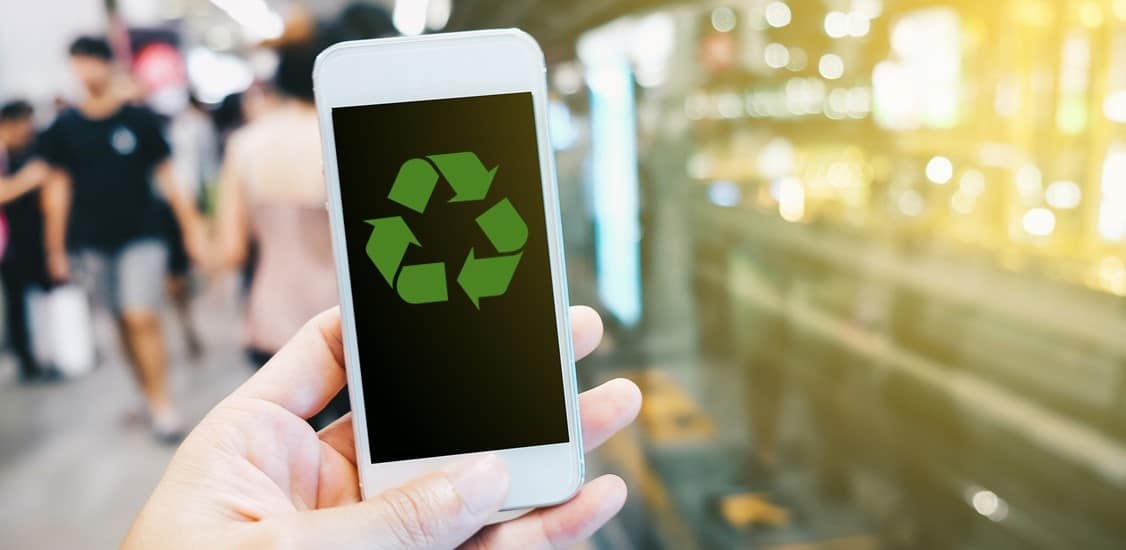Mobile device trade-in services have become a growing trend that is not set to go away any time soon. From the second quarter of 2018 alone, mobile device trade-ins put over $414 million into US consumers’ pockets. With new device prices rising, trade-ins are becoming the norm for customers who want to upgrade to a newer, shinier device at an affordable price.
We also know that trade-in programs are a model where everyone wins - customers receive a new device in exchange for their old one, while mobile operators, OEMS and retailers can retrieve the latent value from the old device or re-use it for insurance purposes. This not only provides an additional revenue stream, but it also assists in the fight to keep old devices out of landfills.
However, while the pre-owned device market is thriving with consumer trade-ins, the benefits of device trade-ins have not yet translated into the business environment. Every time a hardware upgrade cycle comes full-circle, a closet somewhere in an organization’s office gets filled with retired mobile devices. But these devices also hold latent value. Are organizations sitting on an opportunity that they have not yet explored?
To trade or not to trade?
The aim of any Enterprise Mobility Management (EMM) program is business productivity. Giving employees access to corporate data from any smartphone, tablet or desktop while maintaining corporate security. And, unsurprisingly, critical to Mobile Device Management (MDM) is ensuring that the right device is put in the hands of the employee, but with the necessary restrictions and security policies, as well as proactive defence, in place.
A key part of MDM programs is ensuring devices work well and aid the productivity that the EMM program brings. But this presents two main challenges for organizations. Firstly, there is the initial cost of buying new equipment or upgrading devices for employees as a service offering. A change like this for an organization, whether large or small, is expensive, and a choice that is not to be made lightly. Secondly, there is a security risk that comes with an increasingly mobile workforce. Today, data protection has become more important than ever before, and organizations want to know their data is safe and not at risk of being compromised.
Asides from awareness of residual value of devices and trade-in programs associated with them, it is these concerns that have held back the device trade-ins process for enterprises, worried that the trade-in process is not secure enough to meet strict enterprise standards, and the money saved when upgrading is not worth putting sensitive corporate data at risk. A factory reset might put a consumer’s mind at ease, but it is not enough to guarantee the protection of an organization’s data.
But organizations that have closets full of aging mobile devices are also unaware that these devices also pose a security risk. Can trade-ins be the answer that businesses are looking for?
The missing piece of the puzzle
In order to guarantee data security for organizations using trade-in programs, the operator, OEM or retailer responsible for trade-in needs to apply multi-step processes to remove and destroy all data on devices. This process has to go beyond a simple factory reset to satisfy consumers.
There are some simple steps that organizations can also take to ensure successful data sanitization. Firstly, they should make sure that SIM and memory cards are removed, secured, and shredded on-site. This is one of the first steps in preventing sensitive information from getting out.
When working with a reputable company, a large portion of trained trade-in staff are dedicated to the backend step. They carefully remove SIMs and SD cards from each device and dispose them into a secure box. Supervisors ensure that each day the contents of this secured box are cleared, and the SIMs and SD cards destroyed. Leading-edge software can be used to clear an organization’s data from devices in a way that goes much deeper than just a simple factory reset. This can put businesses’ minds at ease, with data protected and destroyed. Then, devices are passed through quality controls and audited to ensure all steps are properly executed, before they are prepared for reuse.
As routine checks are finalized, data is securely removed and devices are deemed ready for distribution, they’re sorted and stored in a dedicated and secure area with staffed guards to ensure they don’t fall into the wrong hands. With this in mind, only devices that are fully data-cleared and processed are approved for resale. This is a fundamental requirement for any organization involved with trade-in business to retain their Responsible Recycling (R2) certification. If devices are data-cleared but are too old or broken for resale, they will be recycled for their materials and green disposal can be guaranteed. Every step of the process requires an auditable electronic certificate to be retained to ensure fidelity of the process. A well-managed enterprise trade-in program affords economic benefits along with the comfort of data security, while keeping their mobile workforce productive with latest devices and applications.
There are already business trade-in programs out therefrom large carriers that offer a feasible solution and are the missing piece of the puzzle in current MDM programs. In addition to helping organizations maximize mobile device performance and employee productivity, they can also offer an additional layer or security and data protection needed in today’s mobile world. And by minimizing the costs of hardware refreshes, they also offer CapEx relief.
And there’s one other motivator that has briefly been mentioned - recycling and reusing devices is environmentally friendly. Over the last few years, sustainable practice has moved back up the corporate agenda and the mobile industry is leading the way - after all, no one wants to be responsible for batteries, plastics, and metals being thrown into landfills. The industry has a duty to minimize environmental degradation and promote sustainable practices - this should be a priority for all organizations around the world in their corporate social responsibility strategies.
Another model where everyone wins
Previously, it was easy to see why enterprise trade-ins may have been risky business. And while consumer mobile device trade-ins are a model where everyone wins, this was never translated for businesses. But enterprise trade-in programs have evolved and today, they do not pose the security risks of the past - and can help to bring more EMM programs to light. What’s more, not only are they green for the environment, they’re green for a business’ bottom line too.


















